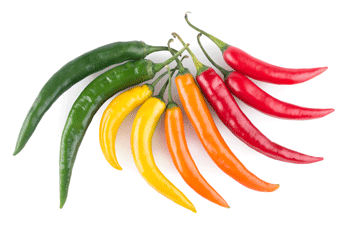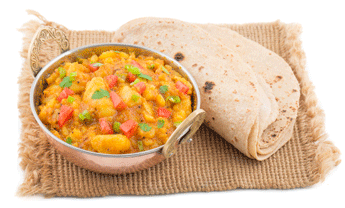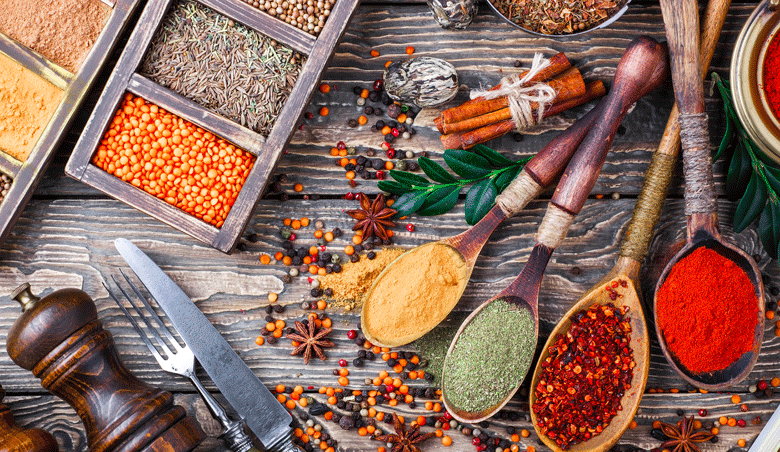[wpseo_breadcrumb]
Its spiciness characterises Indian cuisine. Spicy food is so much a part of Indian culture that it is eaten every day by most of the population. It is thus no surprise that that Indians are absolutely masterful at using spices in cooking. Recipes from India that have been refined over hundreds of years are expertly prepared using skills passed from one generation to another. This results in food that is very hard to beat and up there with the very best.
In this section, we explore some recipes, which if followed closely, will provide excellent results.
There literally thousands of recipes from India for curry . No other country makes or consumes as much curry. While being found in many other parts of the world ( particularly Asia), it is a dish that is iconic to India and the most closely associated with Indian cuisine. 
Curries are made by combining ingredients like vegetable, meat, etc., with spices in a spicy Indian style gravy. Spices used to make curries include coriander, cumin, black pepper, cardamom, turmeric ( and many more). These are typically combined with Chillies, onions, garlic, ginger, and tomatoes to form a curry base. Ingredients like chicken, lamb, seafood and a variety of vegetables are added, which are then (mainly) slowly cooked to arrive at the tender, spicy, flavorful dishes that are loved by so many around the world.
What is the history of curries?
Curries have been traced way back to countries that were part of the Indus Valley civilisation. This was a bronze age civilisation that existed from 3300 BCE to 1300 BCE. The culture covered the Northwest regions of South Asia, including countries like Afghanistan, India and Pakistan.
 Traces of the first curries were found in archaeological diggings. Spices like mustard, cumin, fennel and tamarind pods were crushed in pestle and mortars during this period, and then mixed with food [source: Wikipedia]. Pepper was being used as early as 2000 BCE. These spices, together with turmeric, formed the initial core of Indian spicing, but over time more spices were added.
Traces of the first curries were found in archaeological diggings. Spices like mustard, cumin, fennel and tamarind pods were crushed in pestle and mortars during this period, and then mixed with food [source: Wikipedia]. Pepper was being used as early as 2000 BCE. These spices, together with turmeric, formed the initial core of Indian spicing, but over time more spices were added.
Chillies only appeared in Indian cooking in the 16th century. Before being introduced to Chillies by Portuguese traders in 1510, Indian chefs used black pepper or Indian long pepper with aromatics like ginger to add pungency to their curries. Chillies however, soon accepted as being superior for this purpose and being added to recipes in Indian cooking. Today, Chillies are one of the most used spices in the country.
Where did curry get its name?
Curry is the anglicisation of the Tamil word "Kari ", which means sauce. Curry became known in English cuisine as a result of the Anglo / Indian style of cooking that began during the 17th century. During this period, the British began mixing spice with bland foods to give them more flavour. Subsequently, officials of the British Raj developed a taste for Indian food, which they combined with the English palette to create dishes like Mulligatawney soup and Kegeree. Not many of these dishes have remained popular in modern cuisine, but a trend had been created. The Britsh liked their curry and took recipes from India back home with them.
During this period, the British began mixing spice with bland foods to give them more flavour. Subsequently, officials of the British Raj developed a taste for Indian food, which they combined with the English palette to create dishes like Mulligatawney soup and Kegeree. Not many of these dishes have remained popular in modern cuisine, but a trend had been created. The Britsh liked their curry and took recipes from India back home with them.
The first Indian restaurant in the United Kingdom (the Hindoostane Coffee House) was opened in 1809 . It used recipes from India to make authentic Indian food. Although this restaurant was not very successful, it laid the foundation of Britain's curry loving culture. Indeed, dishes like Vindaloo, Chicken Tikka, Masala and Chicken Jalfrezi are so much part of the British culinary scene that they are virtually considered British.
Types of curries
There are literally thousands of recipes for different curries from all parts of India. Some of the more well-known include:
Seafood
Seafood like fish, prawns, crab and shellfish are popular in India make curries. This is particularly so in the coastal areas like Goa, Odisha and Kerala . Recipes from these regions include Goan Fish curry ( yellow curry with turmeric, coconut milk and chillies ), Fish Mappas (Kerala style fish curry with coconut milk and spices) and Chingudi Chhecha ( Odisha style prawn curry).
 Vegetarian Curries
Vegetarian Curries
Probably by far, the most eaten curries in India are vegetarian. They are made with pulses like Chickpeas ( Channa Masala), spinach ( Saag ). Potatoes ( Shahi aloo curry), aubergines (e.g. Baghara bainga ), tomatoes ( tomato curry ), carrots and gourds (e.g. Sorakkai Poriyal). Curries are also made with Soya protein and beans, including black and kidney beans.
Meat
Lamb or goat are used to make most meat curries. Beef is generally not eaten due to religious beliefs. Lamb Vepadu (a stir-fried lamb curry from Andrah Pradesh). Lamb Madras and Durban curry ( from South Africa) are typical curries that fall into this category
Cheese
Paneer, an Indian cottage cheese, is used to make curries like Kadai Paneer ( paneer, cheese curry) , Saag Paneer ( Spinach and cheese ) and Muglahi Shahi Paneer ( cheese curry with tomatoes, nuts, seeds and spice).
Poultry
Chicken is a popular ingredient to make dishes like Chicken Madras, Methi Chicken, Chettinand Chicken and Butter chicken
In conclusion
All these are but the tip of the fire poker when it comes to what curries are available. There are regional differences in the way curries are made, the ingredients used, and the types of spices used. One thing almost always stays common, though in these recipes from India - CHILLIES

More Indian cooking with Chillies

